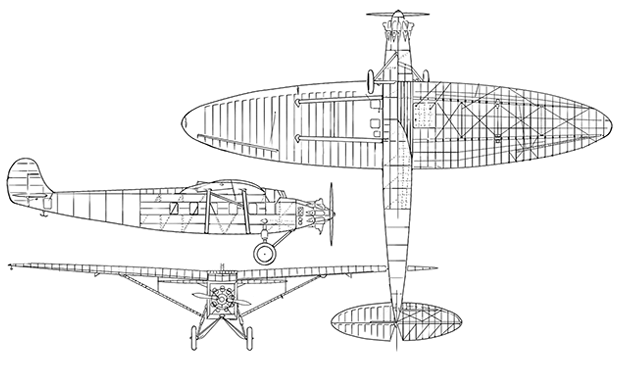KalininKostiantyn
February 5, 1887, Warsaw, Poland —
October 22, 1938, Voronezh, USSR (now Russia)
Elliptical wing
It seems that Ukrainian aircraft constructors have conspired to make the inventions whict are ahead of time.

In 1923, Kostiantyn Kalinin entered the 4th year of the Kyiv Polytechnic Institute. He had already been an experienced military pilot, when he decided to become a plane contractor. It was then he got the position of production manager in Kyiv Aircraft Repair Plant “
As a basis for its first airplane Kalinin took a classic airplane, but completely changed the shape of the wing, making it elliptical. Its front and back parts looked like the segments of the ellipse. Unlike the aircraft with the wings that have already been produced, the new one had a lot of aerodynamic advantages such as a greater lifting force, better manageability, reducing energy consumption and as a result the plane could develop a higher speed and make a flight to a longer distance. In the same 1923 Kalinin received a patent for an elliptical wing.
In the spring of 1925, not only a project was completed, but also the construction of the
After receiving a diploma, the engineer was offered to become the main designer and production manager of aircraft workshops in Kharkiv, which soon turned into a first design bureau of civil engineering. Here Kalinin designed aircraft
Next year, Kalinin’s team received a task for creating a new aircraft. The popularity of air travel grew, and it was needed a plane that could simultaneously transport a large number of passengers...
Aircraft К–5

Length of the aircraft: 15,87 m
Wingspan: 20,5 m
Wings Square: 66,0 m²
Mass of empty aircraft: 3 060 kg
Maximum takeoff waight: 4 030 kg
Engine type: 1×PD М–17F
Power: 1×730 horsepower (runoff)
Maximum speed: 206 km/h
Cruising speed: 178 km/h
Practical range: 960 km
Practical ceiling: 5 040 m
Crew: 2 persons
Useful Load: 8 passengers or 690 kg of cargo
The plane turned out to be inexpensive in production, economical in operation and easy to pilot. To take off it was enough a runway 100 meters long, and for landing — 140 meters. The maximum speed reached 206 km/h, and the distance with eight passengers and two crew members on board, could be overcome 800 kilometers without refueling. In the passenger cabin there were soft armchairs, a toilet, a wardrobe, and a place for luggage. Heating and ventilation was also organized. During 1930, 25 planes were made in the USSR, and by 1934 — 296. The